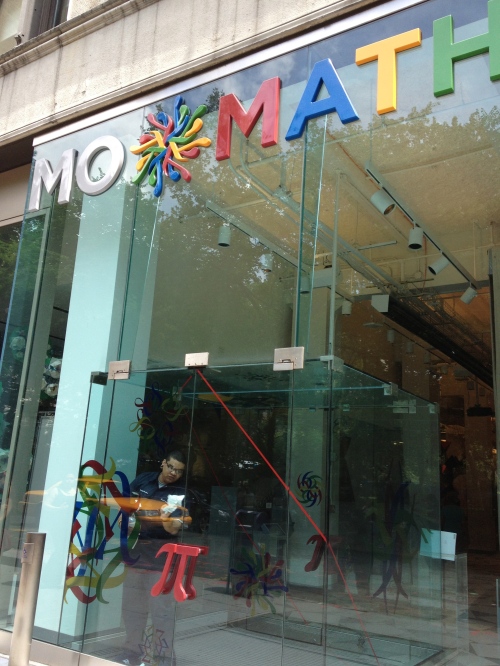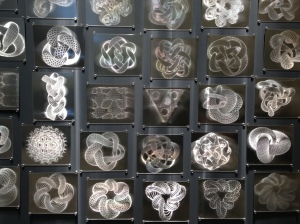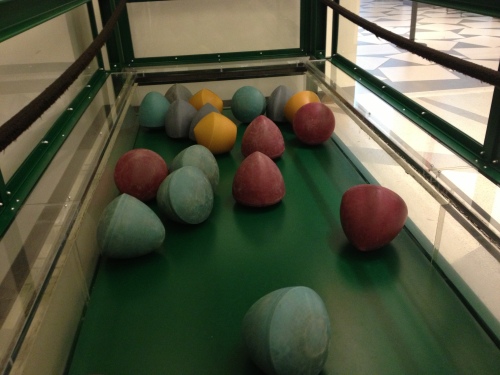Visiting the Museum of Math in NYC
I was reminded by John Burk that the Museum of Math had been opened since I was last in New York. A good friend was in town on a weekend getaway from summer coursework in preparation for starting teaching math this fall. It was the perfect motivation to make time for visiting the museum sooner rather than later.
I was really impressed with the museum when I first walked in. The message that mathematics can be a language of play and exploration is emphasized from the experiential exhibits on the top floor. From pulling a cart that rolled across various solids to working to tesselate a hyperbolic surface with polygons, there is lots to touch, pull, and do to play with mathematical concepts. Without a doubt, these activities “stimulate inquiry, spark curiosity, and reveal the wonders of mathematics” as the mission statement aspires to do. The general organizing idea of the activities on the top floor is to provide a really interesting, perplexing object or concept to play with, and then dip into the mathematics surrounding that play for those that are interested. One could miss the kiosks that explain the underlying concepts and still feel satisfied with the overall experience.
The museum had a good mix of activities from different fields of mathematics. Most exhibits were built around a visually defined task that required little explanation in order to start playing with it and understanding its rules through that play. For me, the activities with the largest initial investment/perplexity ratio were the line of lasers that made it possible to see the cross section of a shape and the wall that generates a fractal tree from images of you and a neighbor. Building objects that roll along a particular path was also incredibly engaging for me.
The challenge for a museum like this is to be intriguing without being tricky or elitist. Given that many people experience anxiety about mathematics for all sorts of reasons, I am absolutely sure that the museum’s exhibit designers worked extremely hard to make the bar for entry for these activities as low as possible with a high ceiling. To this end, I think the museum has done a fabulous job. Most exhibits make clear what they are all about and give visible feedback on a visitor’s progress toward reaching the goal. The only area for growth that jumped out at me was an expansion of the role of the staff circulating among the exhibits. They were extremely knowledgeable of the content of the exhibits and were really excited to share what they knew about them. Even as someone that enjoys mathematics, however, there were some exhibits that left me wondering whether I was playing with it correctly. I saw the Shape Ranger exhibit as a puzzle to figure out, for example. I could see others leaving it when the activity didn’t clearly define visually what the score of the activity represented. I envision an expanded role of staff members helping nudge visitors to understand the premises of the more abstract exhibits through careful questioning and good examples of how to play.
This was not a deal breaker for me, however, and didn’t seem to be for the crowd of people in attendance. The number of smiling kids and adults enjoying themselves is clearly the best indication that the museum is doing a great job of fulfilling its mission. This museum has the same sort of open-ended atmosphere that the Exploratorium in San Francisco creates for its visitors, and that puts it in very respectable company.




